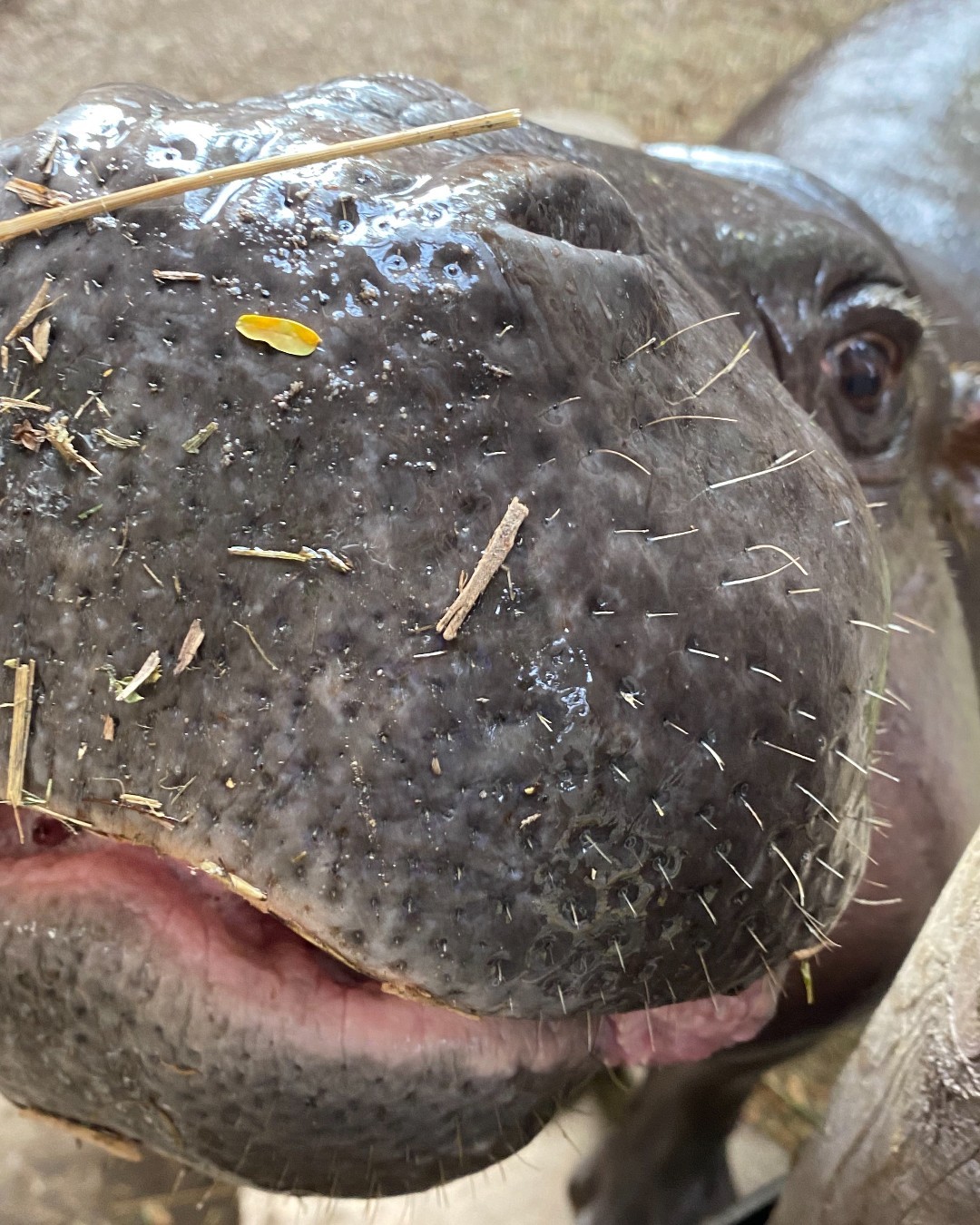- Overview of the endangered status of pygmy hippos and their habitat challenges.
- Conservation efforts and initiatives for pygmy hippos, including the Species Survival Plan.
- The biology and diet of pygmy hippos.
- The role of educational programs and reserves in maintaining pygmy hippo populations.
- Celebrating important milestones like Kindia’s birthday to raise awareness and support.
The pygmy hippopotamus, scientifically known as Choeropsis liberiensis, is a lesser-known yet captivating member of the Hippo family. Currently listed as endangered by the International Union for Conservation of Nature (IUCN), this species faces significant threats due to habitat loss and human interference. Native primarily to the dense forests and swamps of West Africa, the pygmy hippo’s numbers have dwindled to approximately 3,000 individuals. Liberia hosts the majority of this population, but small groups are also found in Sierra Leone, Guinea, and the Ivory Coast. Human activities such as logging, agriculture, and settlement have historically encroached upon their habitat, causing dramatic declines over the past century. As a result, this obscure creature often comes into contact with hunters, which exacerbates its precarious situation.
Efforts to save the pygmy hippopotamus are ongoing and multifaceted. The Toronto Zoo, along with other institutions, participates in the Pygmy Hippopotamus Species Survival Plan (SSP). This initiative is crucial in fostering a genetically diverse and thriving population of these animals in captivity. The SSP enables zoos to collaborate both nationally and internationally, exchanging individuals, like Penelope, Kindia’s progeny, who moved to Michigan’s John Ball Zoo following a breeding recommendation. Preserving genetic diversity is crucial for the species’ resilience to diseases and changing environmental conditions.
Biologically, pygmy hippos differ significantly from their larger relatives, the common hippopotamus. Pygmy hippos are much smaller, typically weighing around 400 to 600 pounds, compared to the massive 4,000-pound average of common hippos. They possess proportionally longer limbs and a smaller head, adaptations that assist in navigating the dense forest floors of their native habitats. Pygmy hippos are predominantly nocturnal and solitary, another contrast to the social common hippo. Their diet consists of various vegetation, including succulents, tender shoots, leaves, roots, grasses, and fallen fruit, often supplemented by aquatic plants found near their swampy habitats. Such a herbivorous diet requires them to spend a considerable amount of time foraging, usually during the night.
The Toronto Zoo’s commitment to pygmy hippo conservation includes both direct and educational methods. The zoo hosts "Meet the Guardian" talks, which inform visitors about the challenges pygmy hippos face in the wild and the conservation work being done to protect them. The Endangered Species Reserve Fund, supported by the zoo, is instrumental in these efforts. By facilitating public education and understanding, these programs aim to nurture a sense of stewardship and responsibility towards conserving biodiverse ecosystems.
Milestones such as birthdays offer unique opportunities to raise awareness and generate support for conservation efforts. Celebrating Kindia’s 19th birthday provides a platform to not only honor her life but also emphasize the ongoing threats faced by her species. Visitors are encouraged to partake in activities that underline the importance of preserving endangered species while celebrating these incredible creatures. The Toronto Zoo’s African Rainforest pool provides Kindia and her counterparts a habitat that mimics their natural environment, complete with areas for swimming and exploring, thereby enriching their lives and offering them better welfare.
In conclusion, protecting the pygmy hippopotamus is a multifaceted endeavor that requires global cooperation and awareness. By understanding their biology, habitat needs, and current conservation strategies, individuals and organizations can contribute meaningfully to their preservation. Each effort, whether through direct conservation action or educational outreach, brings us closer to securing a future where pygmy hippos and their habitats can thrive. Celebrations like Kindia’s birthday not only highlight individual animals but also draw attention to broader conservation messages, sharing the importance of maintaining biodiversity in our rapidly changing world.
*****
Source Description
🦛🚨 Pygmy Birthday PSA 🦛🚨
Join us in wishing Kindia, the endangered Pygmy hippo, a Happy 19th Birthday 🎈
At present, Kindia’s species is listed as Endangered on the International Union for Conservation of Nature (IUCN) Red List of Threatened Species. There are approximately 3,000 left in the wild in West Africa, with Liberia having the majority of the population. Small numbers can also found in the neighbouring countries of Sierra Leone, Guinea and the Ivory Coast. Over the past 100 years, the pygmy hippo’s habitat has declined dramatically as a result of logging, farming and human settlement. As deforestation continues and their habitat becomes more fragmented, newly accessible populations are coming under increasing pressure from hunters.
Are you aware? Your Toronto Zoo continues to be part of the Pygmy Hippopotamus Species Survival Plan (SSP), which aims to establish and maintain a healthy, genetically diverse population, and overall conservation efforts to save this incredible species. Guests may remember that her daughter Penelope, born here in August of 2018, journeyed to the John Ball Zoo in Michigan last year as part of a Species Survival Plan (SSP) breeding recommendation 🦛
Pygmy hippos are herbivores and feed on various vegetation, including succulents, tender shoots, leaves, roots, grasses, and fallen fruit. Pygmy hippos also feed on aquatic plants 🥬
On special days like today and everyday, we are proud to support hippopotamus conservation efforts in the wild through “Meet the Guardian” talks and your Toronto Zoo’s Endangered Species Reserve Fund.
Here’s hoping your day is filled with plenty of treats, naps and time spent in your African Rainforest pool, Kindia 💤🌊


